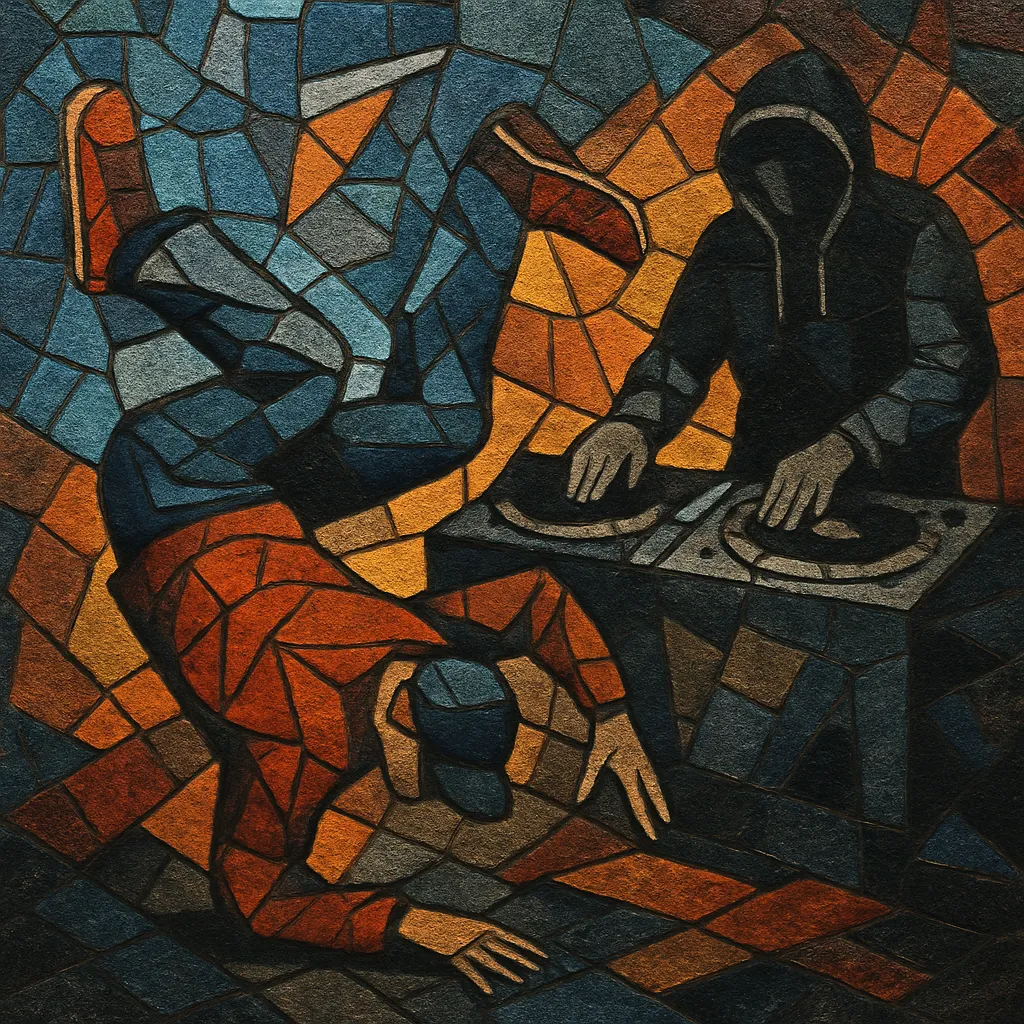Breakstep (often called breakbeat garage) is a UK-born offshoot of UK garage that replaces the 4×4 house pulse with syncopated breakbeats while keeping the scene’s signature sub‑bass weight and swung rhythmic feel. Typical tempos sit around 130–140 BPM, with clipped snares, shuffled hi‑hats, and dark, rolling basslines.
The style bridges late UK garage and the earliest phases of dubstep and grime, emphasizing rugged drum programming, sparse minor‑key atmospheres, and sound system‑ready low end. Vocals, when present, are often chopped R&B snippets or toasting from UK MCs, but many tracks are instrumental, engineered for DJs and dancefloors.
Breakstep emerged in the UK as producers within the UK garage scene began swapping the four‑on‑the‑floor pulse for breakbeat rhythms while retaining the scene’s bassweight, swing, and slick production values. The shift paralleled darker, more stripped strands of garage and the influence of jungle/drum & bass drum programming, leading to tougher drums and moodier palettes.
A widely cited touchstone is DJ Zinc’s "138 Trek" (2000), which demonstrated how a garage tempo and shuffle could mesh with a rugged breakbeat and sub‑heavy framework. Around the same time, El‑B’s Ghost Recordings pushed darker garage aesthetics; Oris Jay (Darqwan) and Zed Bias experimented with broken rhythms and heavy bass; and Horsepower Productions developed sparse, dubbed‑out arrangements that would heavily inform early dubstep.
The sound circulated on UK pirate radio and in clubs oriented toward forward‑thinking garage and bass music. Key hubs included the FWD>> night at London’s Plastic People and record shops like Big Apple (Croydon). Labels such as Ghost Recordings (El‑B), Texture (Oris Jay), Bingo Beats (DJ Zinc), Destructive Recordings (Search & Destroy), and Tempa released tracks that cemented the breakstep blueprint: swung breakbeats at garage tempo, cavernous sub‑bass, and minimal, moody atmospheres.
By 2002–2004, producers were emphasizing even sparser drums and heavier, more enveloping sub‑bass—one pathway that fed directly into early dubstep. In parallel, the square‑wave riffs and 8‑bar structures that some breakstep tracks flirted with fed into grime instrumentals. While breakstep was relatively short‑lived as a named genre, its techniques and dancefloor logic became foundational for the UK’s bass continuum, especially dubstep’s formative years and grime’s early sound.
Breakstep is now often referenced as a transitional style—sometimes cataloged as "breakbeat garage"—but its emphasis on swung breakbeats at garage tempos, powerful subs, and minimal, DJ‑friendly arrangements continues to echo through UK bass music.


